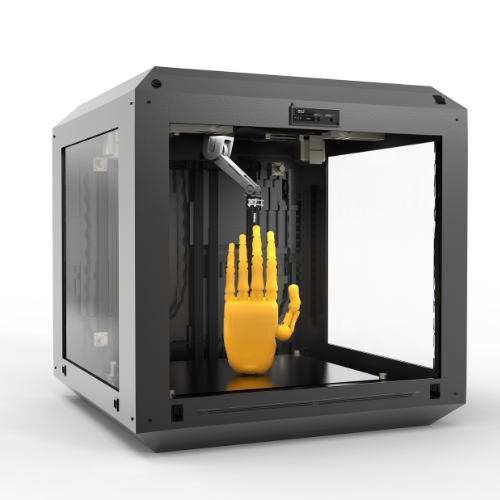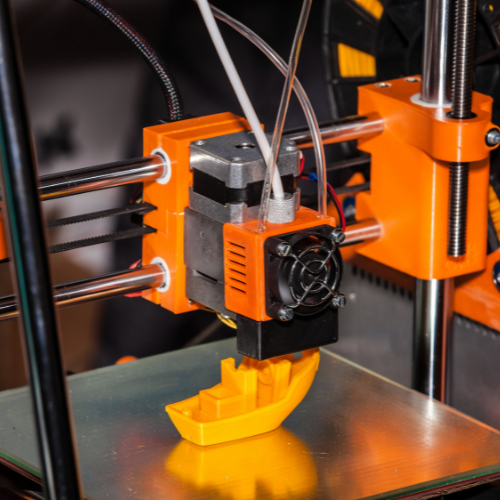By: Seham Elsherif
Many of us know something about the 3D printing technology, but what about 4D printing? Is it familiar?
Three decades ago, 3D printing emerged; it uses special printers to produce various models. These models are designed using softwares, then they are printed layer by layer till we get a 3D model. As for the 4D printing technique, it closely resembles 3D printing, adding the fourth dimension, which is time. Adding the dimension of time means transforming from one form to another as a result of the exposure to an external stimulus or a change in the ambient conditions, such as heat, light, humidity, pressure, or electrical charges.
These printers use a polymer known as shape-memory polymers, hydro gel, or renewable soybean oil, as alternatives to the ink used in traditional printers. The technology emerged in 2013 by at the hands of computer scientist Skyler Tibbits, Director of Self-Assembly Lab at the Massachusetts Institute of Technology (MIT) in the United States of America. As such, this technology is still in its infancy as it only emerged one decade ago.
4D printers produce models using smart materials with the potential to change in size, shape, or color; flexible to be bent or returned to its original form; have the capacity to assemble or disintegrate; in addition to its high efficiency, sustainability, customization, and waste-reduction. The disadvantages include the high cost, the lack of knowledge about how long the printings will last, in addition to the lack of clarity about the environmental impact of 4D-printed products.

4D Printing Applications
4D printing can be applied in different fields; in furniture manufacturing for example. It can also be used in the fashion industry; shoes can be designed to be suitable for the movement, temperature, and environmental conditions. Clothes can be produced with the ability to change according to any change in the temperatures, physical activity, or the surrounding environment.
As for medical applications, 4D printing is used to manufacture medical implants used to save newborns suffering from respiratory problems; the implants change depending on the size of the baby. The technology can also be used in manufacturing pillars and implants that deliver medicines to their correct destination within the body.
In space, 4D printing technology can be applied in producing materials that save space crafts from collision with meteorites. Speaking of 4D printing research, a group of researches from the University of Wollongong in Australia were able to manufacture a water valve using 4D printing technology. This valve can be closed when the water is hot and open when the temperature decreases.

Using 4D Printing in Education
Education is no longer limited to books and textbooks; it has become more interactive, encouraging students to innovate and create using technological tools that help them comprehend complex theories and concepts. To make the educational environment lush and rich, innovation has to be the master of the educational process. It transforms it into an effective and attractive process for students in order to acquire the needed skills to cope with the times.
It is still very early to evaluate the effectiveness of this technology in the field of education; however, with its staggering advances, it can revolutionize the educational process, enabling the students to deal with interactive models, which may lead to more inspiration and studying by immersion. One of the advantages of applying this technology in education is that it simplifies and visualizes concepts related to science, mathematics, and engineering, such as robotics, materials science, and polymers, in addition to stimulating creativity among students through designing models that respond to certain stimuli.
Given the novelty of 4D printing, using it inside classrooms is still very limited in the meantime; we still need more studies to evaluate its effectiveness. In a study conducted at a university in Texas, USA, researchers tested the effectiveness of using 4D printing in education by conducting some workshops with some middle school students who are interested in arts and crafts. Examples of the activities conducted in the workshops include: introduction to 4D printing and producing modules using it, in addition to responding to questionnaires before and after the workshop. The researchers concluded the effectiveness of this technology in education.
In conclusion, 4D printing is promising; it may contribute to enriching the educational process, potentially causing a paradigm shift in it.
References
Multimedia